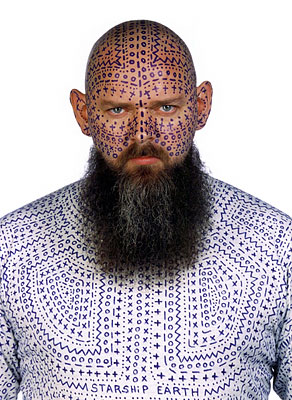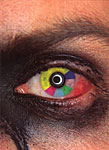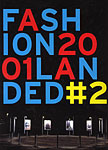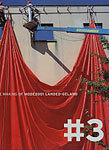|
FASHION2001
LANDED
|
WALTER
VAN BEIRENDONCK in conversation with Luc Derycke The set-up of the project FASHION2001 LANDED reminded me of a story my mother once told me. When she was a young girl she had a pair of ankle boots for best. But all the other girls in the village wore different sorts of shoes when they went out, and the important thing about all these shoes was not what they looked like but the fact that they were all slinq-backs. My mother found it quite unbearable that she had to go to church In her boots every Sunday when everyone else was in their elegant footwear. However, there was no way she could escape the weekly church ritual, let alone buy a pair of sling-backs for herself. Her despair was so great that one day she got hold of a knife and went off to a secret place in order to cut away the back of her boots. It was only after she had cut away the back of one boot that she realized the impossibility of her plan. The result was a mutilated ankle boot, not the shoe she had dreamed of. For LANDED Walter van Beirendonck selected three themes 'a choice based on intuition' - all of which are present in this story. EMOTIONS: my mother felt irrevocably excluded from the group of young girls, but although she was clearly an outsider she nevertheless dreamed of belonging and it was the ankle boots that prevented her dream from coming true. RADICALS: the plan was radical and so drastic that it was Irreversible. MUTILATE?: a shoe was mutilated. The EMOTIONS part of the exhibition shows video recordings of hundreds of people who were interviewed and asked the same question: 'What is your most emotional memory to do with clothing or fashion?'What did you hope to find out about them? 'Fashion is something one cannot dissociate from emotions. For example, as a designer I know that the response to a fashion show is mainly emotional. And yet I rarely see this in the presentation of and comments on fashion. This is why I wanted explicitly to bring this to the fore in this project. I wanted to explain what it is that appeals to me in the fashion machine. There is so much in fashion that is completely without emotion. I think that the tension this creates makes us value the emotional moments even more.' MUTILATE? clearly suggests a questioning of the ideals of beauty, from 'static' !deals of beauty in certain ethnic groups to passing fashion trends such as Christian Dior's post-war New Look and on to the phenomenon of Twiggy, 'revolts' such as Punk and individual statements like that by Mr Pearl, who has raised the corset to the status of a lifestyle. In the introduction to her first book, Fashion and Eroticism, Valerie Steele writes that all her research has convinced her that the concept of beauty originates in sexuality, and that successive !deals of beauty - and fashion - are the result of changing attitudes towards sexual expression. The main theme of clothing generally and fashion in particular is eroticism. Do you agree with this? 'In part. It is probably true that beauty always has something to do with eroticism. But to my mind it is certainly not the basis. As far as I am concerned, the main issue is not men, women or a certain type of sexuality. Of course it does exist, but this is |
 something I do not wish to emphasize yet again in this exhibition. For example, I find lotus shoes primarily an astonishing phenomenon, because of the aesthetics - which we regard as utterly bizarre - that have evolved around them. When one questions sexuality in order to find out something about fashion, one is approaching it analytically and this is something I have tried to avoid doing. I have really tried to consider the phenomenon of body manipulation from different angles simultaneously. The body is affected by more than just sexuality or eroticism.' MUTILATE? is a highly ambivalent title. Essentially, the word Amutilation' suggests loss (of a part of the body, of beauty). However, against this there are all sorts of forces in the exhibition that actually seek to 'Increase' or construct beauty. Is this ambivalence simply the essence of all the manipulation of the body's appearance, and therefore also of fashion? 'Mutilation is a concept that simply appeared in my mind one day, and I have also used it for the title of a book on my own work. As a fashion designer you experience fashion as constant change. This change can assume extreme forms. In this sense I regard fashion as mutilation: making changes to the body. I interpret "mutilate" like this, rather than as "disfigurement". This is probably a typically fashion-oriented interpretation. Sometimes the changes to a body can be so extreme that there is literally a disfigurement, but I would never regard this as "loss". The ambivalence comes from the way in which we think of the body; we think of mutilation as a dirty word. But nobody thinks twice about the plastic surgery that is carried out by doctors. The breasts of a healthy body are enlarged or reduced, and if you think about it this also boils down to an extreme form of mutilation.' -> next |
|||
|
|


